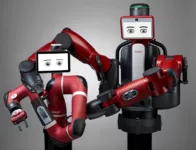In 2017, there was an increase in the manufacture and sales of collaborative robots. Based on research, collaborative robots will command up to 2 billion dollars of the robots market share by 2020 with more than 150,000 units expected to be in use by then. This has led to more and more industries looking to cobots as a way of embracing the rise of an automated future.
Collaborative robots are loved for their ability to fit in industries and perform duties that were previously done by humans. They come with safety features such as collision detection and force feedback which makes them ideal for work in the same environment as humans.
Here are most common applications for collaborative robots.
Pick and place tasks
One of the types of cobots available is the pick and place robots. They are created with the ability to assess and identify objects or parts and package them correctly. Before collaborative robots, this pick and place jobs were done by humans and are very repetitive. Because of the job’s mundane nature, it often led to mistakes or strain and injury because of the repetitive motion.
For an industry just getting into the use of cobots, pick and place cobots can be the best types to start with. These pick and place cobots can be used for any task that involves picking and placing workpieces. For the pick and place function to work, it will require an end effector for grasping the object. This end effector can either be a vacuum cup or a gripper.
Tending to machines
Machine tending before cobots required a human worker to stand for hours working an injection modeling machine, a CNC machine, or any other type of machine. This is done for tool changing or raw material replacement which is long and very tedious. When you replace manpower with cobots, you free the human operator to perform other more meaningful tasks in the company.
One cobot can be used to tend to multiple machines. This is time saving and boosts productivity. For a cobot to be able to undertake these operations, it requires an I/O interfacing hardware ideal for the specific machine. This hardware is what communicates to the robot on the next cycle or when to replenish materials.
Processing tasks
A process task is described as any that needs a tool to be able to interact with a workpiece. Some common examples include dispensing tasks, glue processing tasks, or welding tasks. All these processes will require the use of a tool that goes down to fix a path multiple times. For any industry, training new employees on these tasks can be time-consuming and inaccurate.
However with the use of process task cobots, the programming only needs to be done on one cobot and duplicated onto the others. Again, the cobots solve the issue of having employees perform repetitive movements for one task.
Most cobots are easy to program. This means that any employee with basic knowledge of CAD/CAM programming can easily program a cobot. Cobots come with a polyscope interface which helps to maintain a TCP speed that is constant. This ensures that the cobots work on tasks at a constant rate.
Finishing tasks
Finishing tasks done by human operators require the use of a manual tool where a lot of force is used. It is easy for the operator to suffer injury due to the tool vibrations. Collaborative robots are created in a way that they are able to provide the same force, accuracy, and repetition required to finishing tasks. Finishing jobs include grinding, polishing and also deburring. The cobot in charge of finishing jobs can be trained manually or through programming. Some cobots come with force control which can enhance the productivity of the robot.
Quality inspection
It is possible to use a cobot for quality inspection work on parts. A cobot can perform a full inspection of finished parts, part verification and also images for precision parts. To automate the cobots for faster results, it is possible to mount high-resolution cameras on collaborative robots.
Making use of collaborative robots for inspection ensures high-quality inspection is done which produces more accurate batch production.








